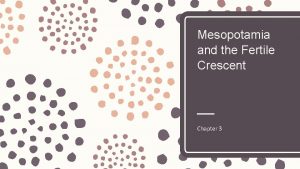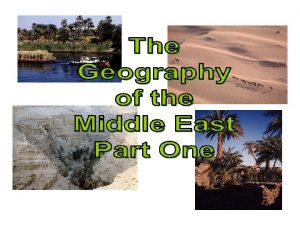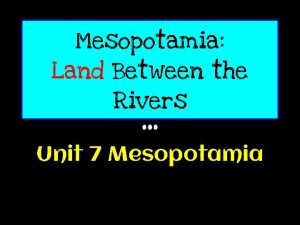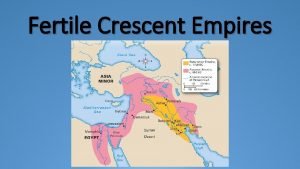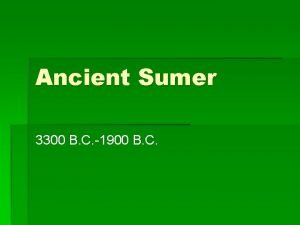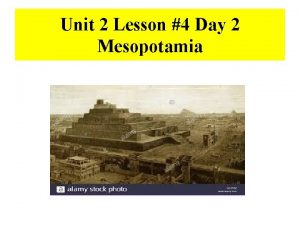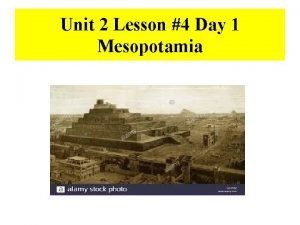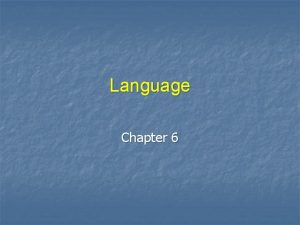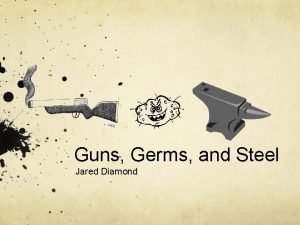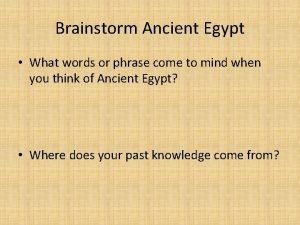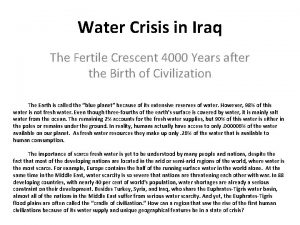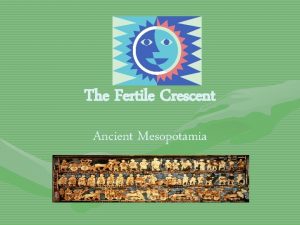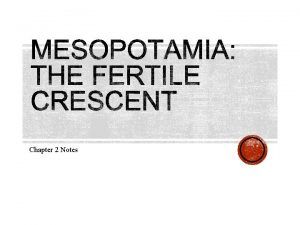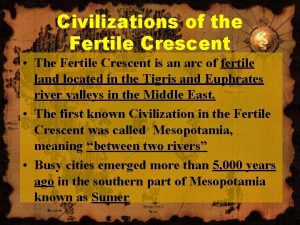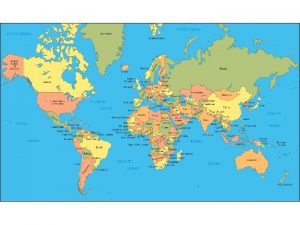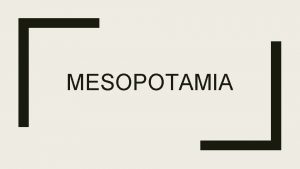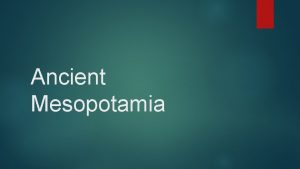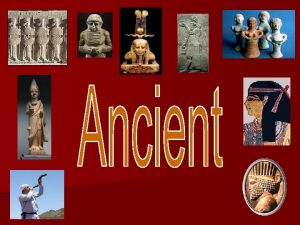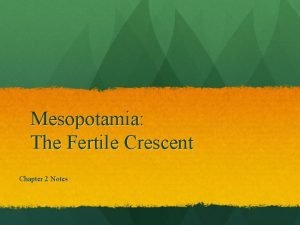CHAPTER 2 The Ancient Middle East FERTILE CRESCENT















- Slides: 15

CHAPTER 2 The Ancient Middle East

FERTILE CRESCENT � � -area between Asia and Europe -good soil for farming -many different people migrate there - lots of cultural diffusion

MESOPOTAMIA -Area of land between the Tigris and Euphrates rivers -World’s 1 st civilization began there (The Sumerians) -controlled rivers to prevent flooding and help farming -used clay bricks for building -first to use wheeled vehicles

Sumerians -developed different social classes -most people were farmers -polytheistic (worshipped many gods) -believed in afterlife -each city built a Ziggurat (temple) to please the gods -invented the earliest writing, Cuneiform (p. 33) -studied astronomy and math -told and wrote epics (long poems that tell a story) -The Epic of Gilgamesh (p. 35)

SECTION 3 PG. 44 Kingdoms of Ancient Egypt

The Nile -first settlers migrated here -most of the land is desert -flooding of the Nile allows for agriculture (farming) -cooperation was needed to control the flood waters (ditches, dams, etc. )

Nile (continued) -the Nile unites upper and lower Egypt (transportation/t rade) � -capital was Memphis �

History of Egypt OLD KINGDOM -ruled by pharaohs – Egyptian kings, treated like gods -expected to treat people fairly -used bureaucracy – different government jobs to organize and operate better -included a vizier - (chief minister) – in charge of supervising government workers and their activities -pyramids built for the pharaohs -believed in life after death, preserved bodies (mummies) and items left for their new life

History of Egypt (cont. ) NEW KINGDOM -time of growth -great pharaohs such as Hatshepsut, Thutmose III, Ramses II -eventually rule ended after taken over by the Greeks in 332 B. C. -

Lives of Egyptians Section 4 pg. 50

EGYPTIAN RELIGION -polytheistic -main god was Amon-Re -believed in the afterlife and had to please the god Osiris

Social Classes � � 1. Pharaohs 2. government officials/priests 3. merchants, scribes, artisans 4. peasants – workers (mainly farmers), some were slaves � Women treated nearly equally to men, unusual for an early civilization

Egyptian Social Hierarchy

Accomplishments � � written records developed through picture symbols(hieroglyphics ) carved in stone later developed hieratic and demotic writing (cursive script) written on papyrus – early form of paper � � � archaeologists figured out the meaning of these symbols by decoding the Rosetta Stone (p. 55) Egyptians studied astronomy, medicine and math also created paintings, sculptures, poems and folk tales

Judaism Section 5 -The religion of the Israelites (Hebrews) -Abraham is the father of Judaism -Torah – sacred book of the Hebrews -Monotheism – belief in one god -eventually taken over and Jews had to leave (The Diaspora) -today the country of Israel is home to Jews
 Geography of the fertile crescent
Geography of the fertile crescent Geography of the fertile crescent
Geography of the fertile crescent Fertile crescent
Fertile crescent Middle east map
Middle east map Mesopotamia environmental challenges
Mesopotamia environmental challenges Esopotamia
Esopotamia Babylon
Babylon 3300 bc
3300 bc Fertile crescent
Fertile crescent Unit 2 lesson 4 fertile crescent
Unit 2 lesson 4 fertile crescent Unit 2 lesson 4 fertile crescent
Unit 2 lesson 4 fertile crescent The fertile crescent is the arc of land that
The fertile crescent is the arc of land that Multilingual state
Multilingual state Yali guns germs and steel
Yali guns germs and steel Fertile crescent
Fertile crescent Where's the fertile crescent
Where's the fertile crescent
